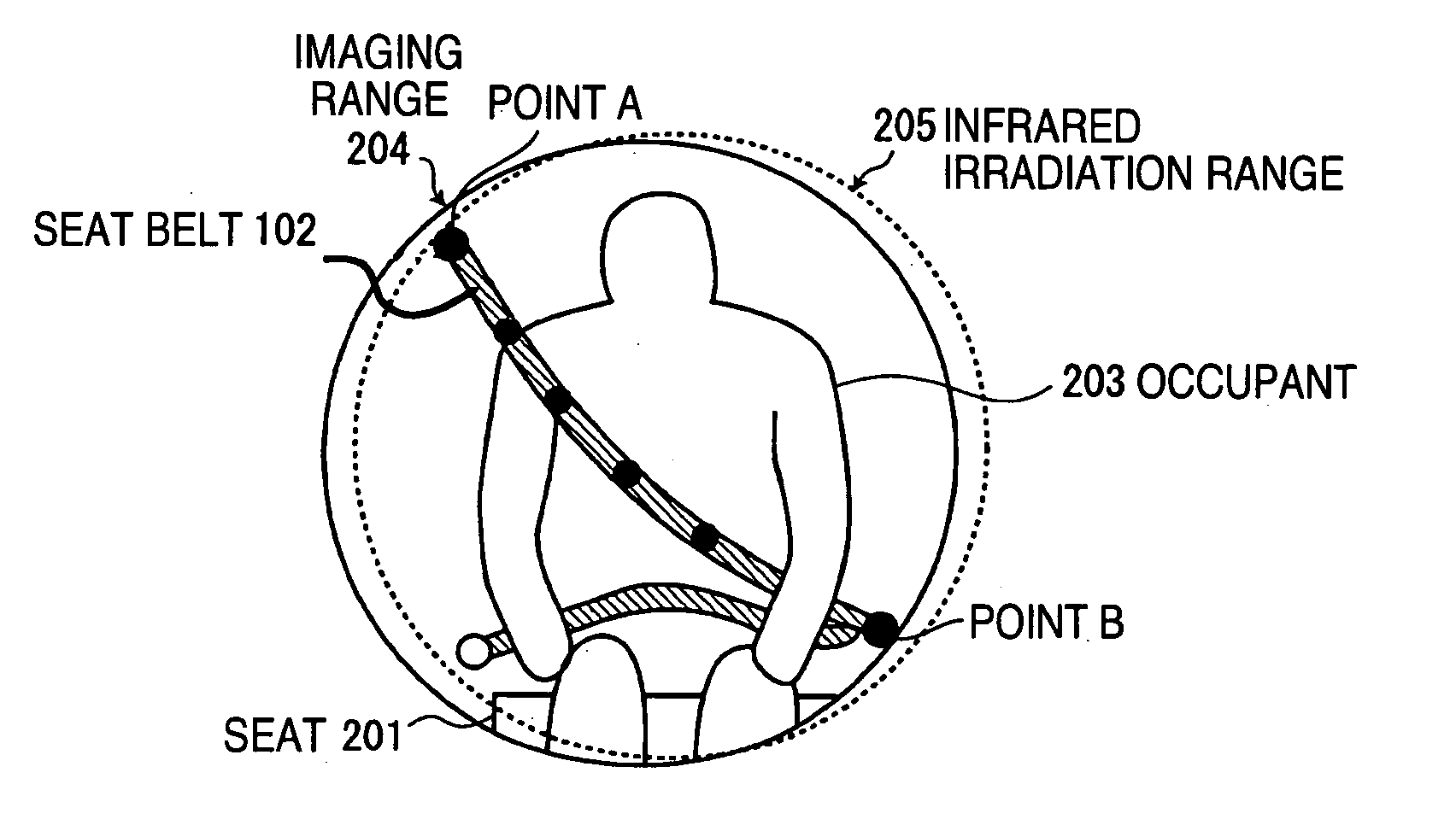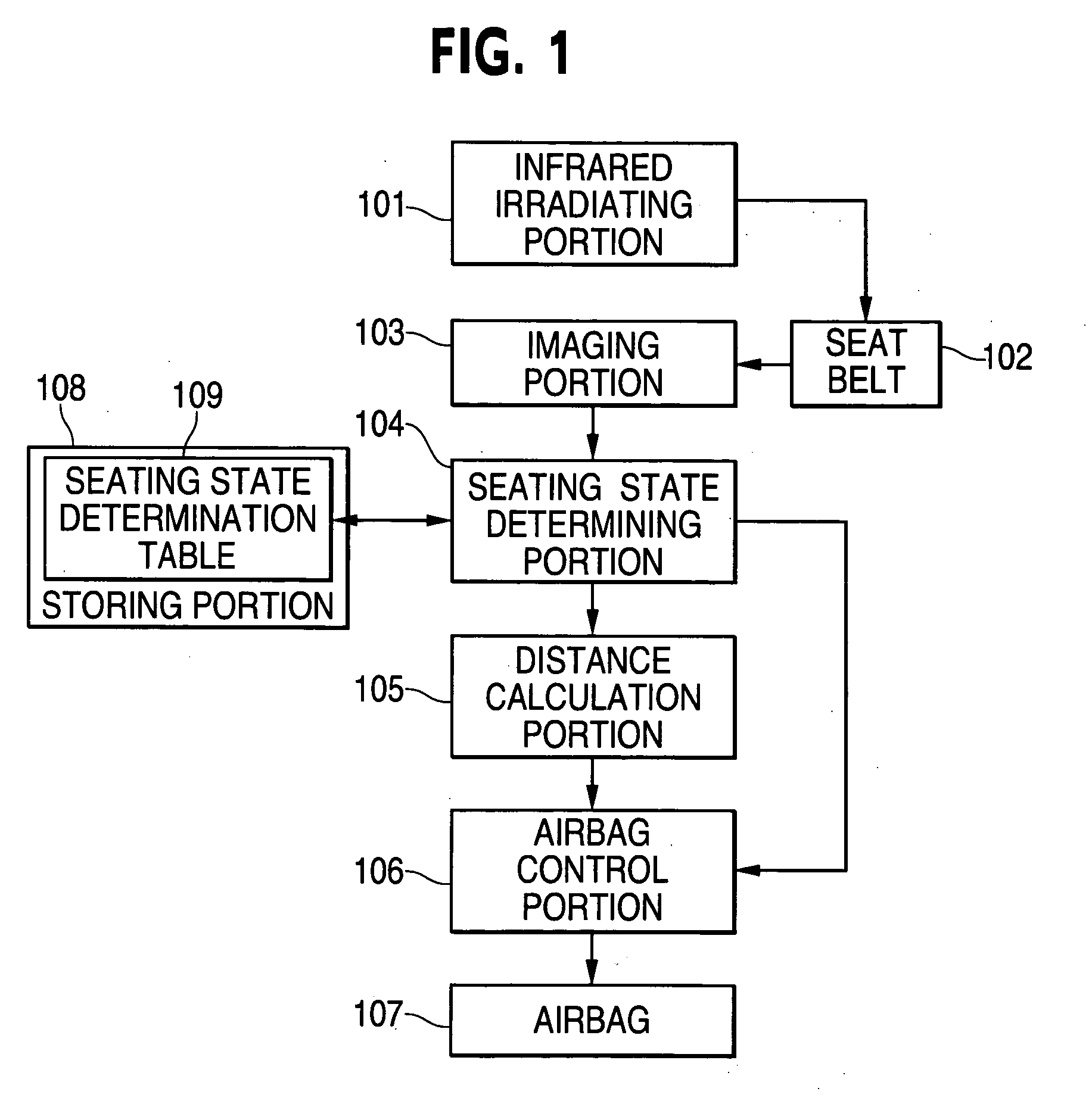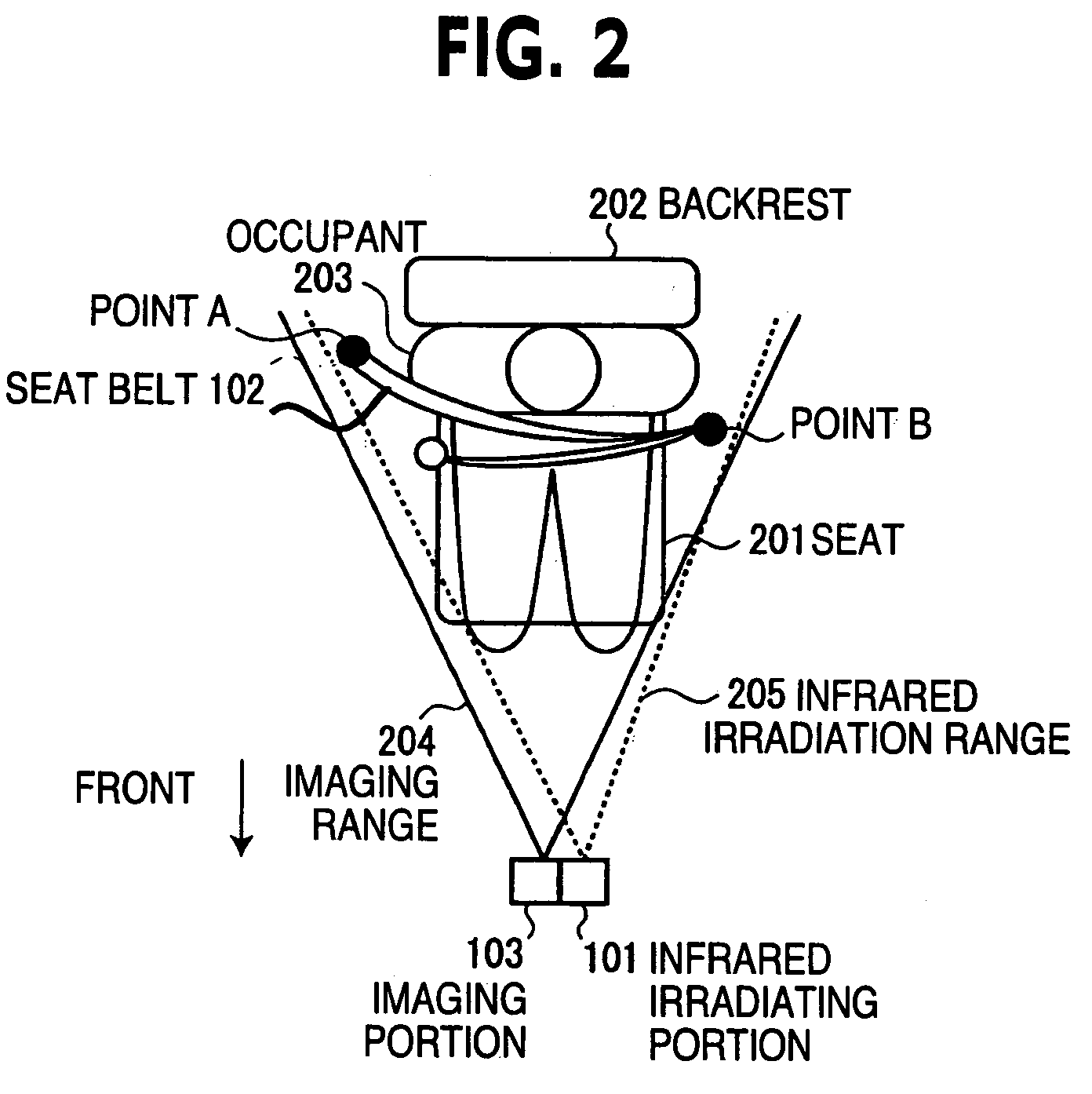Airbag device and occupant classification device
a technology for airbags and occupants, which is applied in the direction of pedestrian/occupant safety arrangements, vehicular safety arrangements, instruments, etc., can solve the problems of inability to determine the seat state of the occupant, the distance to the other body parts cannot be detected, and the airbag could possibly injure the occupan
- Summary
- Abstract
- Description
- Claims
- Application Information
AI Technical Summary
Problems solved by technology
Method used
Image
Examples
first embodiment
[0043]FIG. 1 is a block diagram of the configuration of an airbag device functioning as an occupant classification device according to a first embodiment.
[0044] As shown in FIG. 1, the airbag device 100 includes an infrared irradiating portion 101, a seat belt 102, an imaging portion 103, a seating state determining portion 104, a distance calculating portion 105, an airbag control portion 106, an airbag 107, and a storing portion 108. The storing portion 108 has a seating state determination table 109. According to the embodiment, the seating state is constantly determined by the seating state determining portion 104 and a distance between the occupant 203 and the airbag 107 is constantly calculated by the distance calculating portion 105. In the event of a crash, the airbag 107 is controlled based on the predetermined seating state and the calculated distance. However, the embodiment is not limited to this sequence of process. The seating state determinations include the presence...
second embodiment
[0101] According to the first embodiment, the airbag device 100 estimates the distance when the occupant leans forward. It is noted that if the condition for “leaning forward” is defined in detail and stored in-the seating state determination table 109 used to determine the seating state of the occupant 203, the distance between the occupant 203 and the airbag 107 does not have to be calculated. Therefore, in the airbag device according to the second embodiment, the seating state is determined based on the conditions defined more in detail, and the airbag 107 is controlled based only on the results of such determinations.
[0102]FIG. 11 is a block diagram of an airbag device 1100 capable of serving as an occupant classification device according to the second embodiment. The airbag device according to the second embodiment is different from the airbag device 100 of the first embodiment. A seating state determining portion 1101 is also different from the seating state determining porti...
PUM
 Login to View More
Login to View More Abstract
Description
Claims
Application Information
 Login to View More
Login to View More - R&D
- Intellectual Property
- Life Sciences
- Materials
- Tech Scout
- Unparalleled Data Quality
- Higher Quality Content
- 60% Fewer Hallucinations
Browse by: Latest US Patents, China's latest patents, Technical Efficacy Thesaurus, Application Domain, Technology Topic, Popular Technical Reports.
© 2025 PatSnap. All rights reserved.Legal|Privacy policy|Modern Slavery Act Transparency Statement|Sitemap|About US| Contact US: help@patsnap.com



